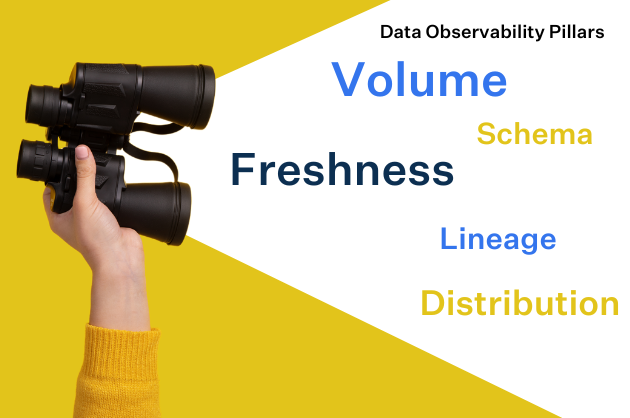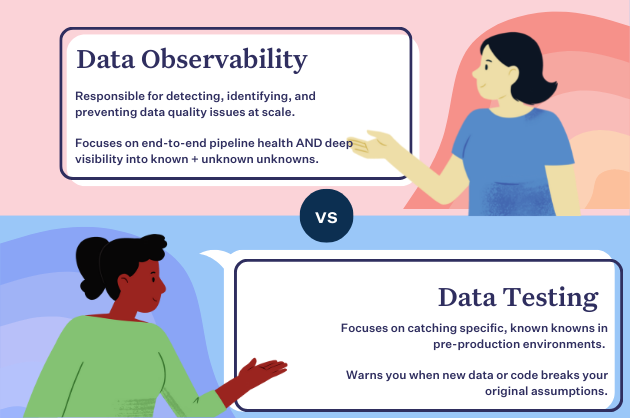Data Observability Doesn’t Just Create Savings – It Drives Revenue, Too

When I talk to data teams about the benefits of data observability and data quality, it’s often framed in the context of preventing the negative impacts of bad data: poor decision making, lost revenue, and even the erosion of customer trust.
With Gartner predicting that poor data quality costs organizations $12.9M per year, data observability becomes a no brainer.
Companies save money when they reduce the amount of time their data engineers spend tackling ad-hoc data quality issues or preventing the loss of trust that occurs when bad data seeps into executive dashboards or machine learning models.
What’s less discussed, however, is the positive impact of high data quality. Specifically, how data observability can help drive revenue and topline results.
In this blog we will cover:
- Reliable data leads to better marketing
- Data quality sets your product apart from competitors
- Automated tooling removes bottlenecks
- Good data drives better decisions
- Don’t forget to include revenue growth in your data quality equation
Reliable data leads to better marketing
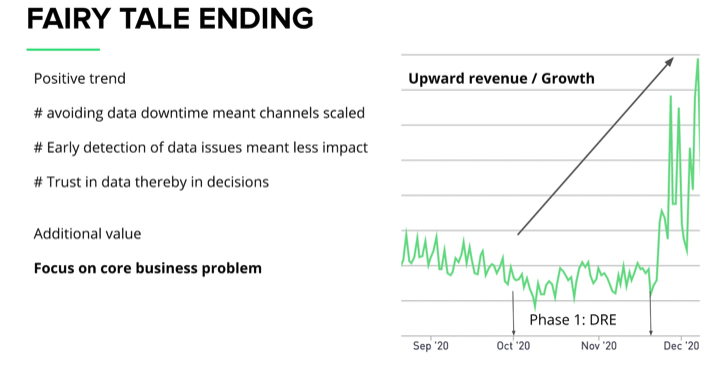
Better marketing execution leading to outcomes such as more high quality leads and shorter sales cycles is likely the first use case that comes to mind for most.
This is the case for Blinkist, an eBook subscription company with more than 16 million users worldwide. Their primary use case for data observability was so they could make bold, aggressive marketing investments with confidence in order to hit an ambitious 40% growth target.
For example, when a channel manager notices a campaign is underperforming, they can easily access data reporting and see if data reliability SLAs have been met and data pipelines are working properly.
If so, they can eliminate bad data as the culprit and look at other solutions, like changing advertising creatives or adjusting the target audience—without ever requesting time or effort from their colleagues on the data team. And if issues are identified and resolved within 24 hours, Facebook or Google could auto-correct and never scale down campaigns.
It also gave Blinkist a competitive advantage by allowing them to pivot quickly–which turned out to be essential when the COVID-19 pandemic caused sharp changes in the market.
At that point, historic data didn’t reflect the current reality of their audience’s daily lives, and real-time data became essential—not just for determining advertising spend, but for understanding the current state of how users were interacting with the Blinkist app and content across the web.
For the most part, companies are leveraging the same few mega-digital advertising platforms that all use open bidding systems. The ability to bet more aggressively and pivot more quickly are key competitive advantages.
Did data observability lead to revenue growth for Blinkist? Well, according to Gopi Krishnamurthy, Former Director of Engineering at Blinkist:
“The scale of growth that we’ve seen this year is overwhelming. Although the data teams can’t take full credit, I definitely think the things we were able to do—in terms of data observability and bringing transparency into data operations—improved how we target our audience and channels.”
Data quality sets your product apart from competitors
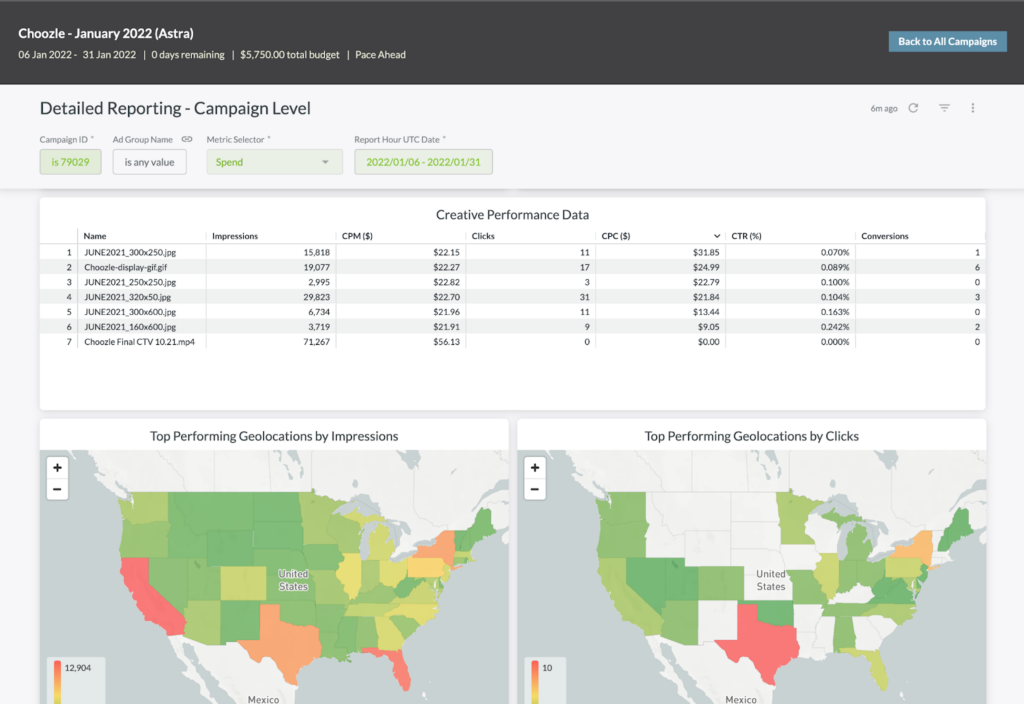
Some of our customers that get the most topline benefit from our data observability platform are companies where data is the product or at least a core component of it.
Generating and providing access to data is how they drive revenue, and for these organizations, higher quality data means a higher quality product. This can help lead to higher margins or increased product differentiation.
Leading digital advertising software company Choozle found value in data observability as they were launching a major platform update that gave its users unparalleled insight into their campaign performance.
For example, whereas previously Choozle could provide campaign performance across the top 20 zip codes, they could now show advertisers their performance across all 30,000 zip codes if they wanted to dive into that level of the data.
Snowflake gave them the power to dramatically increase the amount of data and how their users could interact with it, but data observability played a key role in making sure everything came together without a hitch.
The results of Choozle’s upgraded platform? According to Choozle CTO Adam Woods:
“The release was very clean and we have seen a huge swing in customer satisfaction with our new reporting capabilities.”
Automated tooling removes bottlenecks

Technology leaders and decision makers are excellent at understanding how automation can save labor costs and increase the capacity of their teams to add value to the business.
However, automation and better tooling also accelerate production and execution. After all, Paul Bunyon did lose his contest to the chainsaw.
For example, our friend Atul Gupte, a former data product manager at Uber, told the story of how the ridesharing giant was able to use machine learning to automate the process of validating and verifying worker documents that were required when applying to join the platform.
This saved costs, but it also helped get revenue producing drivers on the platform more quickly, which also was a competitive advantage. For data to unlock these giant leaps forward in value, there needs to be a high degree of confidence in the data that fuel these automated actions.
Good data drives better decisions
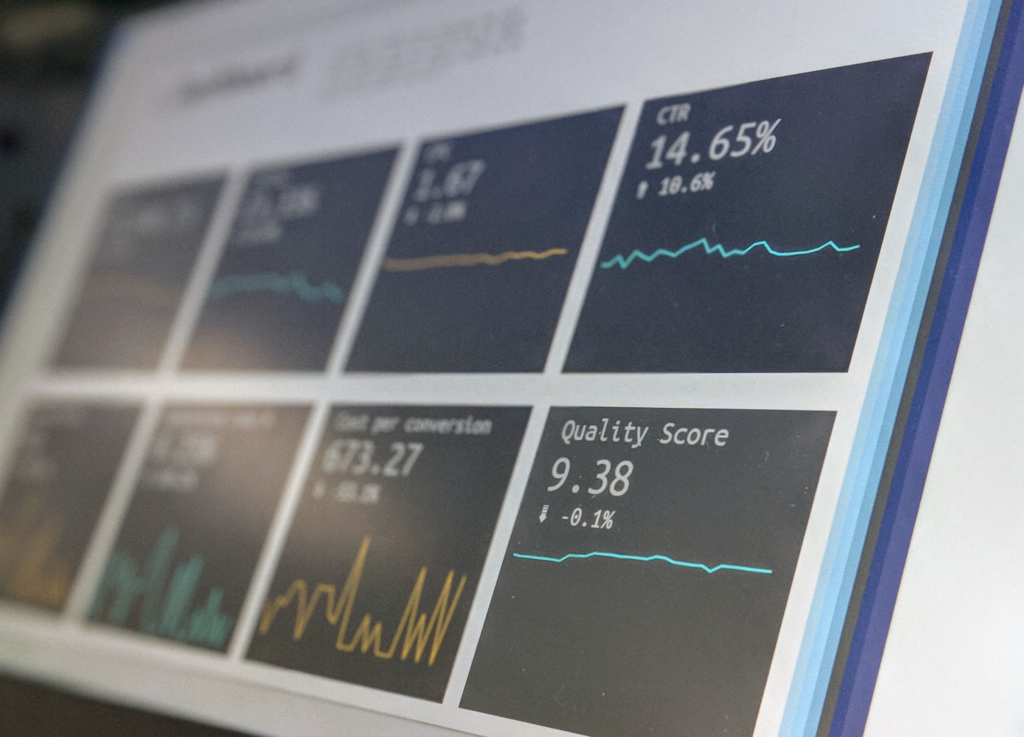
What is the value of increasing data adoption across your organization and inspiring a data driven culture?
According to Forrester, it’s significant: data-driven companies are 58% more likely to beat revenue goals than those who don’t use data to guide strategy and decision making.
Trust is essential to efforts to democratize data, build a data mesh, and increase data adoption. You can’t have data trust without high quality data.
Mammad Zadeh, the former VP of Engineering at Intuit for their Data Platform team who was responsible for leading the team behind the company’s data platform and data mesh strategy put it best when he said:
“… Today, data analytics, machine learning, and access to good data are at the heart of everything we do and growing at an exponential rate. We need a new way of organizing ourselves, and a new way of thinking about the architecture and the infrastructure needed to satisfy the needs of the producers and consumers of data within an organization. And that means restructuring the central data team monolith and distributing the responsibility of data across engineering domains.”
Don’t forget to include revenue growth in your data quality equation
Don’t get me wrong, bad data should be avoided at all costs. It is a scourge and creates operational, reputational, legal, and other costs that can be easily avoided with data observability.
But as you’re building out your potential use cases and justifications for investing in a data quality solution, don’t forget the power good data can have on generating topline growth as well!
Curious how data observability can help drive revenue at your organization? Book a time to speak with us in the form below.
Our promise: we will show you the product.
 Product demo.
Product demo.  What is data observability?
What is data observability?  What is a data mesh--and how not to mesh it up
What is a data mesh--and how not to mesh it up  The ULTIMATE Guide To Data Lineage
The ULTIMATE Guide To Data Lineage 

